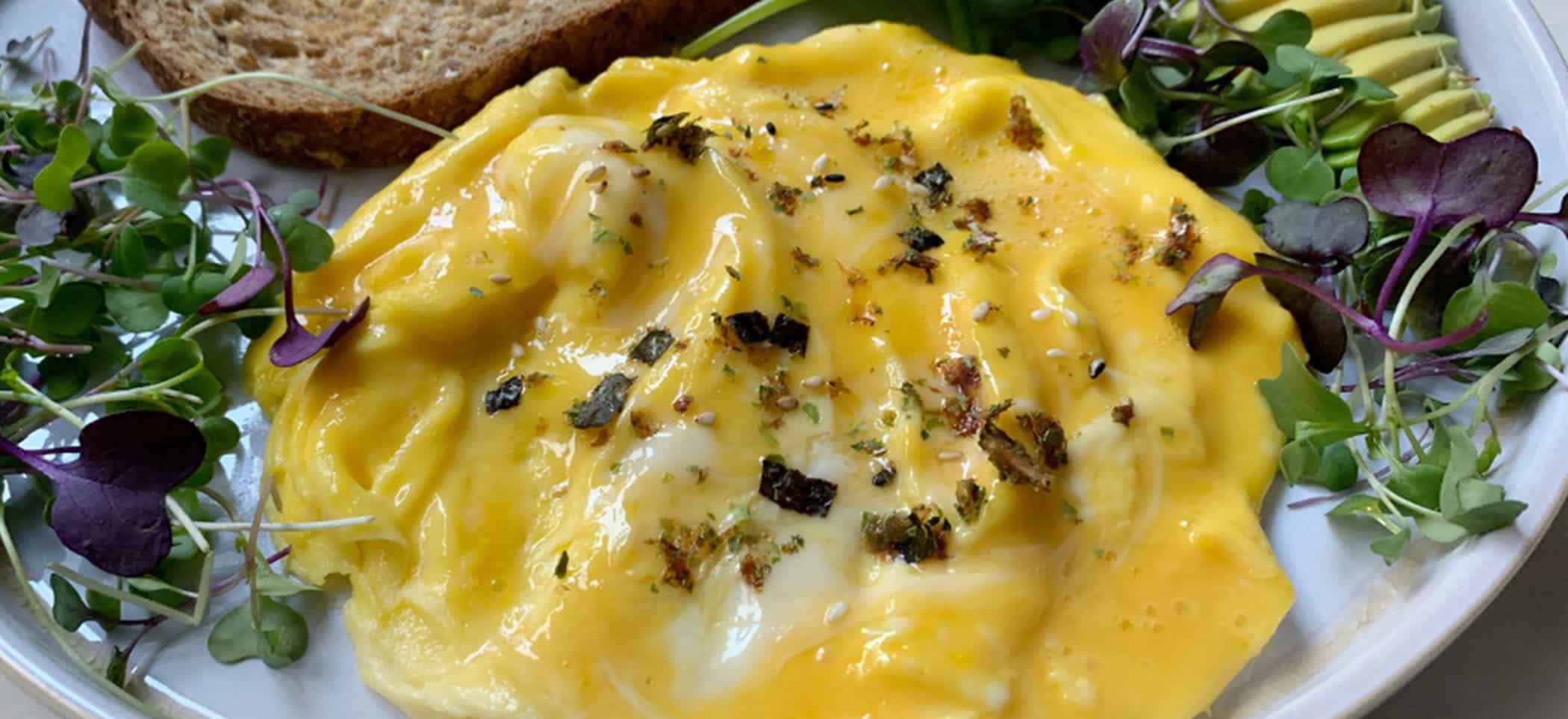

-
11M Total Time
-
1M Prep Time
-
6 Ingredients
-
1 Servings
How do you like your eggs? This Egg Enthusiast is a fan of the creamy, buttery kind that slides onto the plate from the pan in one gorgeous and silky piece. Keep it simple or dress up your eggs by adding seasonings to the egg mixture before cooking, or adding toppings after cooking. This recipe is finished off with a sprinkle of furikake seasoning, a popular rice seasoning in Japan, typically made with toasted sesame seeds and small pieces of seaweed, plus dried fish flakes and salt.
Directions
Crack eggs into a medium-sized bowl and beat the eggs with milk and salt.
Heat a nonstick pan on medium heat, and add oil or butter.
Note: How much oil/butter you need depends on the non-stick pan you’re using. A newer, quality non-stick pan will need less oil. On the other hand, if the pan is older, and if you’re after a silky smooth, one-piece scrambled egg, you’ll need to use more oil to achieve the desired result.
Pour the egg mixture into the heated pan. Reduce the heat to low-medium. Let it cook for 30 seconds or so (depending on the pan and your stove) before gently pushing the egg around with a spatula. Repeat until a nice round shape is formed. Let cook a little longer until desired consistency is achieved.
Transfer scramble into a plate and sprinkle with furikake seasoning and add microgreens for garnish (if using).
Ingredients
- 2 large eggs
- 2 Tbsp whole milk
- 1 - 3 tsp avocado oil or butter
- 1 tsp furikake seasoning
- Salt, to taste
- Microgreens, to garnish (optional)
Tips
Per serving:
- Calories 250
- Total Fat 20 g
- Saturated fat 5 g
- Sodium 445 mg
- Carbohydrates 4 g
- Dietary Fiber 2 g
- Protein 14 g
To ensure food safety, eggs should be cooked until both the yolk and the white are firm. Consuming raw or undercooked eggs may increase your risk of foodborne illness, especially for those with certain medical conditions. For recipes that call for eggs that are raw or undercooked when the dish is served, use either pasteurized shell eggs that have been treated to destroy Salmonella, or use pasteurized egg products.





 Protein
Protein Grain
Grain Fruit
Fruit Vegetable
Vegetable Dairy
Dairy